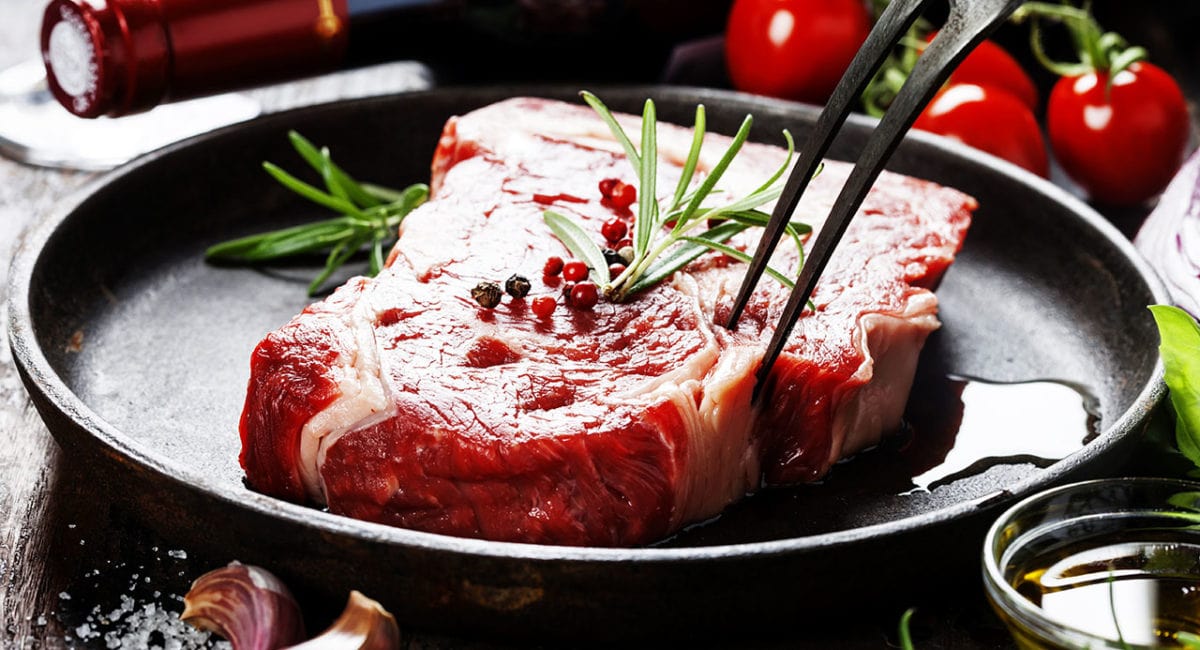The 5 Greatest Benefits of Eating Grass-Fed Beef
on
Grass-fed beef is nothing more than a buzz-word if you don’t know why it’s the most beneficial beef out there. We’re here to break down the greatest benefits of eating grass-fed beef, from the impact on a healthy diet to taste.
First, it’s worth noting the major differences between grass-fed and grain-fed beef. Both come from cows that start out living similar lives. They nurse from their mothers for six to nine months, grazing on grass all the while.
After that, grain-fed cows move to concentrated feeding operations, while grass-fed cows continue to roam on pasture and eat their natural diet of greenery. Grain-fed cows are rapidly fattened with corn or soy-based feed, while grass-fed cows take longer to come to market weight.
The grass-fed difference leads to some major benefits. We’ll cover the five biggest benefits here, including:
- The benefits for your diet
- The benefits for the planet
- The benefits for the animal
- The benefits for your taste buds
We’ll weave in research along the way, so you can feel confident in choosing grass-fed beef. Read on for more.
1. Grass-fed beef is leaner.
Grass-fed beef has a reputation for being a leaner meat—and it’s true. Depending on the cut, grass-fed beef can be lower in saturated fat and calories when compared to its grain-fed counterpart. This also depends on the animal and its activity, of course.
Worried that all that leanness translates to no flavor? Then you haven’t tried a ribeye from ButcherBox—it’s proof that grass-fed beef is robust, beefy, and succulent all in one. More on the flavor of grass-fed beef later.
2. Grass-fed beef is free from added hormones and antibiotics.
ButcherBox’s grass-fed and grass-finished cows are never given added hormones or antibiotics. This is key because the use of growth promotants and antibiotics in the animal production industry is rampant.
Grain-fed, conventional cows often consume sub-therapeutic levels of antibiotics in their feed just to prevent illness, not to treat any specific illness. This works as a Band-Aid to crowded, unclean conditions.
3. Grass-fed beef is more sustainable for the planet.
When compared to the environmental impacts of concentration feeding operations, pasture-based, grass-fed farming is less damaging to the planet. This is because the concentration of manure in feedlots becomes an environmental hazard at that scale, with the ability to irritate skin, eyes, and respiratory tracts of exposed individuals.
This concentration of manure can also cause water pollution, leaching into aquatic ecosystems and contributing to algal blooms that become toxic to aquatic species.
While recent studies have found the grass-fed approach to produce more greenhouse gases because the cows are slaughtered later in life, there are sustainable farming options—like pasture rotation—that help offset this.
4. Grass-fed farming is more humane for the animal.
ButcherBox cows are free to roam on pasture and graze on their natural diet of grass, with access to shelter when needed. They’re never kept in feedlots.
ButcherBox beef is also certified by the Australian Animal Welfare Certification System (AAWCS). Beyond ButcherBox meat, pasture-raised, grass-fed animals have the advantage of no confinement and all the ills that come with it, like increased risk of illnesses and infections.
5. Grass-fed beef taste.
Controversial opinion here, but we think a high quality, grass-fed and grass-finished ribeye tastes just as good as or better than its grain-fed counterpart. This is because meat from grass-fed cows is beefy, robust, and succulent. Cooked properly, it’s every bit as delicious.
Grass-Fed Beef Guide
Table of Contents
About Grass-Fed
- What is Grass-Finished Beef?
- Grass-Fed vs. Grass-Finished
- Grass-Fed vs. Grain-Fed
- 100% Grass-Fed Beef vs. Organic Beef
Benefits of Grass-Fed
- Grass-Fed Beef Benefits
- Grass-Fed Beef in the Most Popular Diets
- Is Grass-Fed Beef Better for the Environment?
Buying Grass-Fed
- Grass-Fed Beef in America
- Why It Is Difficult to Find Butcher Shops
- How to Buy Grass-Fed Beef with No Stores Nearby


